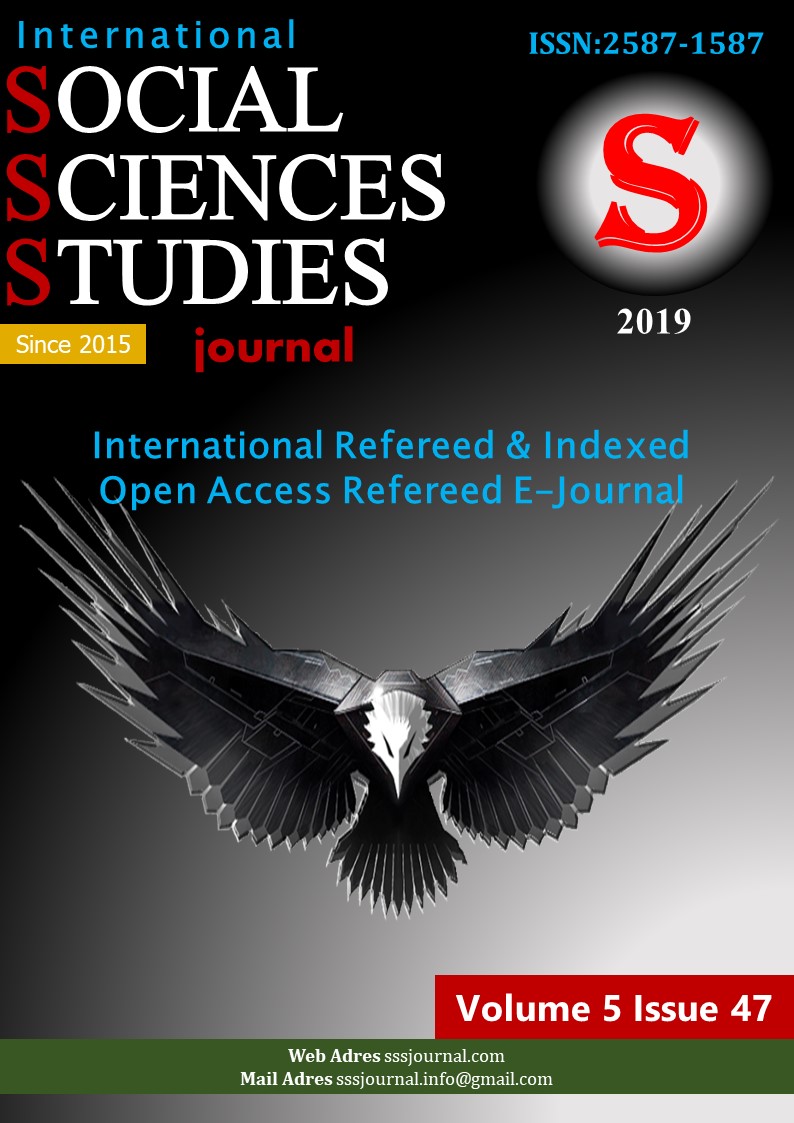Author :
Abstract
Yaygın gramer kategorilerinden biri, ismin hal kategorisidir. Şu anda, Azerbaycan dilinde ismin altı hali vardır. Dilin gelişim süreci boyunca kuralları, morfolojik ve sözdizimsel yapısı değişir. Bu açıdan bakıldığında, ismin hal ekleri de değişmiştir. Azerbaycan dilbiliminde isim örneği hakkında farklı görüşler vardır. Birçok dil uzmanı görüşlerini ve teorilerini sunmuş ve bu konudaki iddialarını kanıtlamaya çalışmışlardır. Araştırmamıza göre, XX yüzyılın 30'uncu yılına kadar, ismin yedi hali vardı, ama bir sebepten dolayı, -la, -lə ekinden imtina edilmişdir. Eski Şümer dilinin morfolojik yapısı göz önüne alındığında, bu dilin modern Türk dilinin morfolojik yapısına çok yakın olduğu açıktır. Kelimelerin yapısal tipleri aynıdır. Şümerce dilinde isimleri incelerken İ.M. Dyaknov, ismin daha bir halini kayd etmişdir: durum bildiren hali. Dyaknov, bu halin Türk dillerinde de aynı olduğunu söylüyor. A.Gaben, ismin 9 halinin bulunduğundan bahseder. A.Sherbak ismin 10 hali olduğunu bahsedilen ve “Gutatgu bilik” başlıklı türk edebiyatının (“Qutadğu biliq”, “Gutatğu bilig” ) seçkin çalışmalarında isimin 7 halinin olduğunu söulemişdir. Bazı dilbilimciler, ismin 6 halinin bulunduğundan bahseder. Bunlara J.B. Holderman, J.V. Preindlini örnek vermek olar.
Keywords
Abstract
One of the common grammatical categories is a case category. In each language, the cases of the nouns comes from certain morphological and syntactic requirements. At present, there are six cases in the Azerbaijani language and these are divided into two groups: place and grammatical. Generally, during the development proccess of the language, its internal rules, morphological and syntactic structure change. There are some changes in the internal rules, morphological and syntactic structure of the language. From this point of view, the case suffixes of the noun has also changed. There are different opinions about the case of noun in Azerbaijani linguistics. Many linguists presented their opinions and theories and have tried to prove their claims on this subject. According to our research, until the 30th years of the XX century, there were seven cases of the name, but for some reason, the suffix -la, -lə was reduced. Considering the morphological structure of the ancient Sumerian language, it is clear that, this language is very close to the morphological structure of the modern Turkic language. The structural types of the words are the same. while studying the cases of the noun in the Sumerian language, İ.M. Dyaknov noted the one mor case of the noun: cooperative case. Dyaknov says that this case is also the same in the Turkish languages.
A.Gaben mentions that there are 9 cases of the noun. Due to the A.Sherbak, there are 7 cases of the noun in the outstanding work of the turkish literature titled “Gutatgu bilik” ( “Qutadğu biliq”/ “Gutatğu bilig”) is mentioned that there are 10 cases of the noun. Some linguists mentions that, there are 6 cases of the noun. They are J.B. Holderman, J.V. Preindle and M. Vigye.
But M.Kazımbey claimed regarding 7th case and mentioned their names in Arabic language. There are 7 cases of the noun according to the well-known scolar B.Chobanzadeh’s work titled “The Turkish lanuage” (1928), bur in his another book titled “Turkish gramer” he menthiones that there are 6 cases of the noun.
Keywords
- 4. Modern Azerbaijani language, M. Huseynzadeh Baku 1954, 197 p. 5. Layout inTurkish languages. N.K. Dmitriev. M. 1969, p.153
- 6. Infamous to the Turkish-Tatar license. B. Chobanzade; translator. N. Novruzova, Baku, Aspoliqraf (Aspoligraph), 2006. 180 p.
- 8. Grammar of the Azerbaijani language. Y. Seyidov. Baku, Baku University, 2011, 368 p
- 9. Modern Azerbaijani language (morphology) Q.S. Kazimov. Baku: Science and Education, 2014. p. 446,
- 10. General grammar of Turkish-Tatar language. M.Kazymbey. translation, research, commentary: I.A.Abbasov Baku: Zardabi LTD, 2017. p.1000





